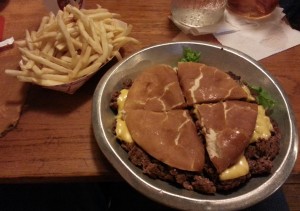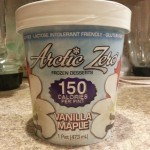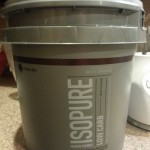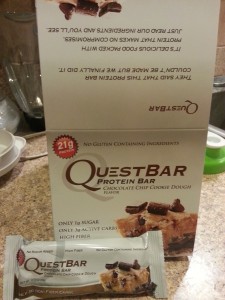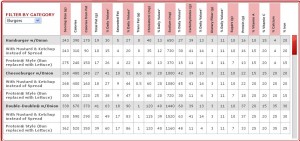This is less an informational post than it is an attempt to articulate a major gap in my understanding of nutrition.
When I first entered the fat loss world, I gleaned that I needed to be in a calorie deficit — but that was about it. I’ve experimented with serious calorie restriction + lots of steady state cardio, a vegetarian diet, cyclical ketogenic diet + mild lifting, and IF carb cycling + heavy lifting á la Leangains.
In all that time, I’ve learned a few different things.
- Tracking food intake is key.
- You hit your macros, and good things happen.
- Lifting heavy + sufficient protein = muscle growth/conservation.
The basics don’t really change, but there seem to be differing voices regarding what is possible in terms of fat loss and specifically recomposition. I understand and accept that a deficit is required to lose fat. Energy requirements will be pulled from circulating macronutrients and then from fat stores after that has been exhausted.
The ideal (fantasy) case would look like this:
- Every gram of protein goes to grow muscle tissue.
- Every gram of carbohydrate goes either to fuel training or your brain.
- Every gram of fat goes to fuel other activity.
- Energy requirements unsatisfied by dietary fat are taken directly from fat stores.
We try to manipulate macronutrient ratios such that as much protein as possible goes to muscle growth and as much energy as possible comes from fat storage, but to my knowledge, such a golden ratio as above does not exist. If it did, we could eat more calories and still be in a deficit because our caloric needs would be increased in the process of building muscle.
That being the case, we try to supply enough protein to retain existing muscle mass or possibly grow it in a deficit. A small overestimation is preferable to catabolism.
However, things get much trickier with carbohydrate and fat intake. I’ve heard two different thought processes, and I’m not sure if they are mutually exclusive or just different ways of attacking the same problem.
Cyclical Ketogenic vs Higher-Carb Cycling:
The low-carb (by which I mean < 100g / day) folks emphasize that insulin spikes are undesirable in a fat loss program because they provide the perfect environment for fat storage. However, it is my understanding that calorie deficits being equal, any stored fat would be shuttled right back out for usage at some point in the day when the energy deficit takes effect. With an equal calorie intake, circulating protein and fat would (theoretically) be used for energy, thus cancelling out any benefit to avoiding an insulin spike. (It doesn't matter if dietary fat is stored and then released or just stays in circulation longer... it all has to be used before existing body fat will be accessed.) The low-carb writers I’ve read also recognize that insulin is necessary for shuttling glycogen into the muscles, but that is emphasized more for bulking and seems to be ignored in the cut except during a refeed. (I’m ignoring leptin and assuming refeeds are taking place to keep those levels up.)
I’m still confused as to what role ketogenesis plays in the process besides providing an alternate source of fuel with equal calorie burn given an equal deficit.
When I trained with Andy Morgan, obviously we used IF and carbohydrate cycling. Higher carbs on training days were alternated with significantly low carbs on rest days, as specified in the Leangains protocol. The only real explanation I ever read for the seriously low carbs on rest days was to allow more protein and fat into the diet, the fat being used to keep certain hormone levels up.
Leangains also stresses removing the obsessive nature of meal timing, but almost all the protocols suggest consuming most calories in the post-workout window. The only possible reason for this in a deficit state would be nutrient partitioning for muscle growth/preservation.
In the end, adherence to the calorie deficit is king, and that’s why I currently use a lower carb diet — I’ve found I’m more compliant with it. However, assuming I could keep compliance, I wonder if there would be a partitioning benefit to increasing the carb:fat ratio. If I were able to shuttle more protein to muscle, I could theoretically maintain equal fat burn while increasing protein to whatever level my muscles would accept it.
Summary:
Here are my lingering questions:
- Given an equal deficit and adequate protein, are insulin spikes undesirable, desirable, or irrelevant in terms of body composition?
- Is there an ideal ratio when combining resistance training with a deficit, and does meal timing have a significant effect on that?
- Is there any benefit to ketogenesis for fat loss besides adherence issues?
- If you are able to direct nutrient partitioning to muscle anabolism, are you effectively increasing your caloric burn by that very process?
I welcome the thoughts of any who wish to address my amateur ramblings.

